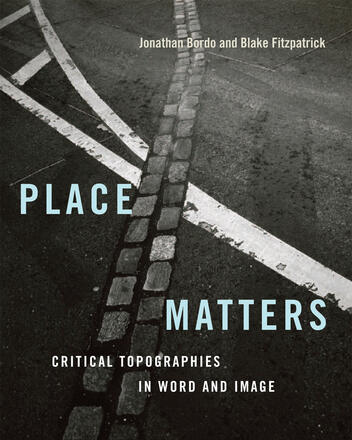
Place Matters
Critical Topographies in Word and Image
A meditation, in word and image, on the meaning and significance of place.
Description
A place comes into existence through the depth of relationships that underwrite a physical location with layers of sedimented names. In Place Matters scholars and artists conduct varied forms of place-based inquiry to demonstrate why place matters. Lavishly illustrated, the volume brings into conversation photographic projects and essays that revitalize the study of landscape.
Contributors engage the study of place through an approach that Jonathan Bordo and Blake Fitzpatrick call critical topography: the way that we understand critical thought to range over a place, or how thought and symbolic forms invent place through text and image as if initiated by an X marking the spot. Critical topography’s tasks are to mediate and to diminish the gap between representation and referent, to be both in the world and about the world; to ask what place is this, what are its names, where am I, how and with what responsibilities may I be here? Chapters map the deep cultural, environmental, and political histories of singular places, interrogating the charged relation between history, place, and power and identifying the territorial imperatives of place making in such sites as Colonus, Mont Sainte-Victoire, Chomolungma/Everest, Hiroshima, Fort Qu’Appelle, Donetsk airport, and the island of Lesbos. With contributions from the renowned artists Hamish Fulton and Edward Burtynsky, the Swedish poet Jesper Svenbro, and others, the collection examines profound shifts in place-based thinking as it relates to the history of art, the anthropocene and nuclear ruin, borders and global migration, residential schools, the pandemic, and sites of refuge.
In his prologue W.J.T. Mitchell writes: “Places, like feasts, are moveable. They can be erased and forgotten, lost in space, or maintained and rebuilt. Both their appearance and disappearance, their making and unmaking, are the work of critical topography.” Global in scope, Canadian in spirit, and grounded in singular sites, Place Matters presents critical topography as an approach to analyze, interpret, and reflect on place.
Reviews
“No other volume offers such a resonant dialogue of
media, academic inquiry, and artwork. Productively framed by the notion of
critical topography, Place Matters is both creative and analytical,
wide-ranging but focused. It presents the state of the art in spatial studies
and speaks urgently to current political concerns.” Ina Habermann, University
of Basel and author of Myth, Memory and the Middlebrow: Priestley, du
Maurier and the Symbolic Form of Englishness